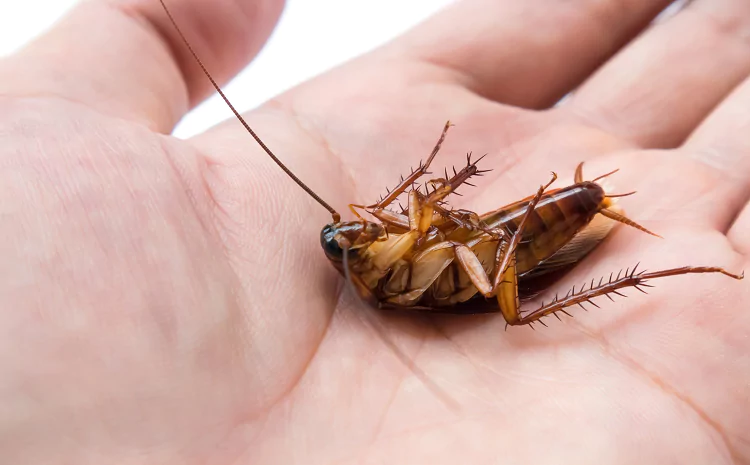Cockroaches are notorious household pests that can leave behind bites. But what does a cockroach bite look like exactly? And how can you identify and treat the bites?
Key Takeaways
- Cockroach bites resemble small, red bumps similar to mosquito bites
- They typically appear in clusters and may be itchy
- Properly identify bites since they can be confused with other insect bites
- Treat bites with topical creams and practice good wound care
- Getting rid of roaches using poison baits, traps, and cleaning prevents more bites
While not all species of cockroaches bite humans, some can leave small, red bumps on the skin that are sometimes itchy. Read on to learn all about cockroach bites so you can spot them and take care of them properly if they do occur.
Do Cockroaches Bite Humans?
Over 4,000 species of cockroaches exist worldwide but only around 30 of those interact with humans. Out of the species that live amongst people, only a small subset actually bites humans.
The most common biting roaches are:
- German cockroaches
- American cockroaches
- Australian cockroaches
- Brown-banded cockroaches
These cockroaches bite exposed skin such as the face, arms, hands, etc. Their bites often occur at night since these insects are nocturnal.
Roaches don’t see humans as a food source. Instead, cockroach bites happen by accident like if one gets trapped against your skin or tangled in hair or clothing.
What Does a Cockroach Bite Look Like?
So what does a cockroach bite look like after it happens? Here is how to identify cockroach bites on your body:
The bites resemble small bumps that are red and slightly raised. They are usually about 1-4 mm wide.
Some other key traits of cockroach bites include:
- Red, inflamed, raised welts on skin
- Bumps have a flat, oval shape generally
- May be clustered together in a group
- Can be itchy but not always
Since cockroach bites share many visual similarities with other insect bites, they often get mistaken for:
- Flea bites
- Spider bites
- Bed bug bites
- Mosquito bites
Pay close attention for the cluster formation. Also take note if bites appeared after seeing roaches around your home recently. These clues can help correctly pinpoint the source as roaches.
Treating Cockroach Bites
Cockroach bites clear up on their own over the span of a few days up to a week. But you can help speed up healing and relieve itching with these at-home treatment tips:
- Clean bites gently with soap and water
- Apply antibiotic creams to prevent infection
- Take antihistamines for swelling and itching relief
- Don’t scratch bites to avoid wounding skin more
More severe cockroach bites may require medical treatment. Seek emergency care if you experience:
- Difficulty breathing
- Swelling in throat area
- Dizziness or nausea
These reactions could signify a serious allergic reaction that needs immediate medical attention.
Preventing Future Roach Bites
Getting rid of household roaches is key to prevent more bites from occurring. Follow these crucial roach prevention tips:
Set out roach killer bait stations in infested areas around your home. Look for poisons that use fipronil, boric acid, or hydramethylnon as active ingredients.
Use sticky traps and pheromone traps to catch roaches. Check traps daily to monitor activity. Replace them once full.
Eliminate food sources and hiding places that attract roaches by cleaning vigilantly. Fix any leaky pipes, seal cracks, empty trash frequently, etc.
Combining methods creates the strongest roach-fighting strategy so bites don’t happen in the first place.
Final Verdict
While many people may not even realize when a cockroach bites them, knowing what to look for can help identify roach bites properly. They manifest as red, raised bumps on the skin that cause mild to moderate itchiness.
Treating bites for comfort and preventing roach infestations from worsening are key to avoid getting bitten more. With how rapidly cockroach populations grow, getting them under control is crucial for helping minimize bites.

